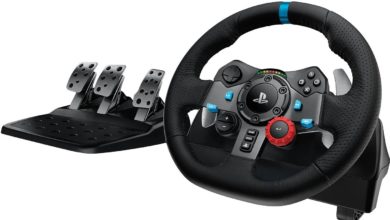Meizu Pro 6 unveiled with 3D Touch display

After many leaks and rumors, the Meizu Pro 6 has been officially unveiled in Beijing today. Meizu PRO 6 is the successor of the Meizu PRO 5 but comes with a smaller screen and battery.
There were rumors that the Meizu Pro 6 will come with 6 GB RAM but they have been proven wrong now. The device comes is powered by a deca-core MediaTek Helio X25 processor, which comes with two Cortex-A72 CPU cores clocked at 2.5GHz, four A53s at 2.0GHz, and four more A53s at 1.4GHz and Mali-T880 GPU. The device features a 5.2-inch Super AMOLED display with a 1920 x 1080 resolution. The display has a pixel density of 423ppi and is protected by the Gorilla Glass 3.
The device comes with 4 GB of RAM instead of the rumored 6 GB. Along with that, you get 32/64 GB internal storage which can be further expanded up to 128 GB via microSD. The Meizu Pro 6 comes with Dual hybrid sim slot and the Sim slot 2 can be used for microSD card.
The device sports a 21 megapixel Sony IMX230 image sensor that features laser-assisted and phase detection autofocus capabilities. Below the primary camera there are 10 LEDs for dual-tone flash in a circular array but it is not similar to ring flash. There is a 5 MP sensor in the front for selfies.
The Meizu Pro 6 runs on Android 6.0 Marshmallow with FlyMe 5.6 UI skinned on top. The device comes with 3D Press, which is basically Meizu’s alternative to 3D Touch.
The device has a fingerprint sensor with a 0.2-second recognition time. The device is powered by a 2560mAh battery with mCharge 3.0, which will charge the Pro 6 battery from empty to full in under an hour. Another improvement to the Pro 6 is the addition of USB Type-C slot.
Connectivity options include 4G LTE, Wi-Fi 802.11 a/b/g/n/ac, Bluetooth v4.1, NFC, GPS, A-GPS, and USB Type-C connectivity.
The Meizu Pro 6 is available in Gray, Gold and Silver color options. The device is priced at CNY 2,500 ($385) for the 32 GB varaint and CNY 2,800 ($430) for the 64 GB varaint.
Meizu Pro 6 Specification
General
| Price | ¥2,499 | ¥2,799 (China) |
| Announced | 13 April, 2016 |
| Status | Available |
Display
| Display Type <strong>Display Technology => </strong> A number of display technologies and types used in mobile phones => TFT (Thin Film Transistor), IPS (In-Place Switching), OLED (Organic Light Emitting Diode), AMOLED (Active-Matrix Organic Light-Emitting Diode), Super AMOLED (an even advanced version of AMOLED), Resistive Touchscreen (Resistive touchscreens contain two layer of conductive material with a very small gap between them which acts as a resistance), Capacitive Touchsceen (Capacitive touchscreen technology consists of a layer of glass coated with a transparent conductor) | Super AMOLED |
| Size | 5.2 |
| Resolution | 1920 x 1080 |
| Pixel Density <strong>Pixel Density (PPI)</strong> is refers to the concentration of pixels on a particular display, measured in pixels per inch (ppi). Pixel density is calculated by dividing the diagonal pixel resolution of a display by its diagonal size, higher pixel density better display quality. | 424ppi |
| Display Protection <strong>Display Protection => </strong> Gorilla Glass is a special alkali-aluminosilicate glass shield with exceptional damage resistance that helps protect mobile displays from scratches, drops, and bumps of everyday use, It is always better to go for a smartphone with Gorilla Glass for that added protection and peace of mind. | Gorilla Glass 4 |
| Features | 3D Touch from Synaptics |
Hardware
| Chipset <strong>Chipset</strong> is a group of integrated circuits designed to perform one or a more dedicated functions, often with real time computing constraints, Popular smartphones are equipped with more advanced embedded chipsets that can do many different tasks depending on their programming. | Mediatek Helio X25 |
| CPU <strong>CPU</strong> (Central Processing Unit) mostly known as processors, CPU processes instructions in order to carry out certain functions that make your device operate properly. Processors are often described as the brain of computers, smartphones and tablets, Smartphones and tablets rely on processors to carry out their every task, Processors are an incredibly important factor in selecting any type of computing device, including your smartphone. | 2x Cortex-A72 @ 2.5GHz, 4x Cortex-A53 @ 2GHz, 4x Cortex-A53 @ 1.4GHz |
| GPU <strong>GPU</strong> (Graphics Processing Unit) is a single-chip processor designed to rapidly manipulate and alter memory to accelerate the creation of images in a frame buffer intended for output to a display, This includes things such as lighting effects, object transformations, and 3D motion. | Mali T-880 |
| RAM (Memory) <strong>RAM</strong> (Random Access Memory) is a type of computer memory that can be accessed randomly, any byte of memory can be accessed without touching the preceding bytes that allows information to be stored and accessed quickly from random locations. RAM is the most common type of memory found in computer systems, smartphones, tablets and other electronic devices. | 4GB |
| Internal Storage <strong>Internal Storage</strong> is a data storage space (flash memory) mostly used in smartphones, tablets and other electronic devices where operating system, apps, music, photos, videos, files and other user data Is stored. | 32GB | 64GB |
| Card Slot <strong>Memory Card Slot</strong> is a special slot for inserting a memory card. Memory cards allow you to expand the phone's built-in memory, A memory card (sometimes called a flash memory card or a storage card) is a small storage medium used to store data such as text, pictures, audio, and video, for use on small, portable or remote computing devices such as mobile phones, mp3 players, digital cameras. | Yes |
| Sensors <strong>Sensors</strong> are electronic components that detects and responds to some type of input from the physical environment. The specific input could be light, heat, motion, moisture, pressure and location, The output is generally a signal that is converted to use in computing systems, a location sensor, such as a GPS receiver is able to detect current location of your electronic device. | Fingerprint sensor |
Battery
| Battery Type <strong>Battery Type => </strong> Cell phones run on various kinds of batteries depending on the manufacturer, phone size or shape and features. There are basically four types of cell phone batteries => Lithium Polymer, Lithium Ion, Nickel Metal Hydride and Nickel Cadmium. | Li-Ion (Lithium Ion) |
| Capacity <strong>Battery Capacity</strong> is a measure (typically in Amp-hr) of the charge stored by the battery, and is determined by the mass of active material contained in the battery. The battery capacity represents the maximum amount of energy that can be extracted from the battery under certain conditions. | 2560mAh |
| Fast Charging | Yes, mCharge 3.0 |
| Wireless Charging <strong>Wireless Charging</strong> (Inductive Charging) uses an electromagnetic field to transfer energy between two objects. This is usually done with a charging station. Energy is sent through an inductive coupling to an electrical device, which can then use that energy to charge batteries or run the device. | No |
Camera
| Primary <strong>Camera</strong> is able to capture photographs and usually videos, The most important characteristics of a camera are the resolution (measured in megapixels), lens focus type (fixed or automatic), higher megapixel cameras are known to capture higher quality photos, but not always a good measurement of the photos quality. | 21mp |
| Camera Features |
Sony IMX230 sensor 0.07 second autofocus time Laser and Phase Detect Auto Focus f/2.2 aperture 1/2.4 sensor size |
| Secondary | 5mp |
| Flash <strong>Flash Light => </strong> There is commonly two types of flash lights are used in camera mobile phones, LED Flash (LED flash offers lower power consumption with drive circuitry that takes up very little room, LEDs can be strobed faster than any other light source), Xenon Flash (xenon flash produces an extremely intense full-spectrum white light for a very short duration) | 10-LED ring flash |
Design
| Type <strong>Design Type</strong> called form factor refers to a mobile phone's size, shape, and style as well as the layout and position of major components of phone. There are three major form factors seen in mobile phones => bar phones, folding phones and sliding phones. | Bar |
| Dimensions | 147.7x70.8x7.25 mm |
| Weight | 160 grams |
| Protection |
Aluminum Unibody Corning Gorilla Glass 4 |
| Colors | Silver, Black, Gold |
Network
| SIM <strong>SIM</strong> (Subscriber Identity Module) is a small card that contains mobile network subscriber's account information. This allows the phone using the card to attach to a mobile network. The SIM card is most commonly associated with GSM and UMTS mobile networks. Moving a SIM card from one phone to another allows a subscriber to switch mobile phones without having to contact their mobile network carrier. SIM cards can also be used by a phone to store limited amounts of data, such as phone numbers and text messages. | Nano SIM |
| Dual SIM | Yes |
| 2G Network | 850 / 900 / 1800 / 1900 |
| 3G Network | 850 / 900 / 1900 / 2100 |
| 4G Network | 1(2100), 3(1800), 7(2600), 38(2600), 39(1900), 40(2300), 41(2500) |
Software
| Operating System <strong>OS => </strong> Every computer system run on a base software called Operating System (OS). Operating System controls all basic operations of the computer (such as smartphone, PDAs, tablet computers and other handheld devices). The Operating System allows the user to install and run third party applications (apps), apps are used to add new functionality to the device. | Android 6 Marshmallow |
| User Interface <strong>UI</strong> or user interface of a device is the look and feel of the on-screen menu system. How it works, its color scheme, how it responds to button presses, all of these things are part of the user interface. | Flyme UI 6.0 |
Connectivity
| Bluetooth <strong>Bluetooth</strong> is a wireless communications technology for exchanging data between mobile phones, headsets, computers and other network devices over short distances without wires, Bluetooth technology was primarily designed to support simple wireless networking of personal consumer devices. | v4.1 |
| Infrared <strong>Infrared</strong> connectivity is an old wireless technology used to connect two electronic devices. It uses a beam of infrared light to transmit information and so requires direct line of sight and operates only at close range. | |
| Wi-fi <strong>Wi-Fi</strong> is a popular wireless networking technology using radio waves to provide high-speed network connections that allows devices to communicate without cords or cables, Wi-Fi is increasingly becoming the preferred mode of internet connectivity all over the world. | 802.11b/g/nac |
| USB | v3.1 Type-C |
| GPS <strong>GPS</strong> The Global Positioning System is a satellite-based radio navigation system, GPS permits users to determine their position, velocity and the time 24 hours a day, in all weather, anywhere in the world, In order to locate your position, your device or GPS receiver must have a clear view of the sky. | Yes |
| NFC <strong>NFC</strong> (Near field communication) is a set of standards for smartphones and similar devices to establish peer-to-peer radio communications with each other by touching them together or bringing them into proximity, usually no more than a few inches. |





